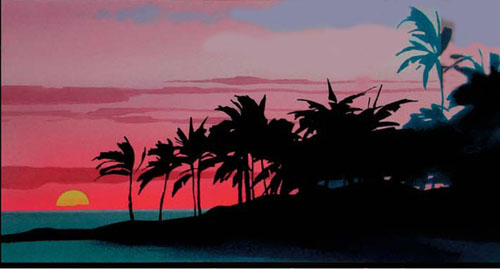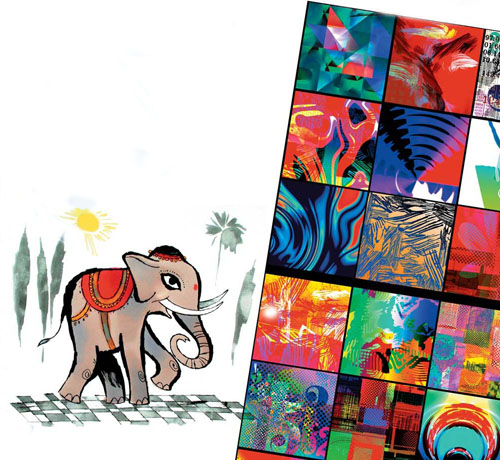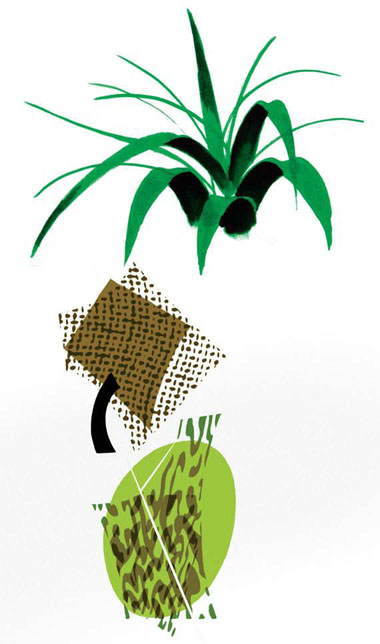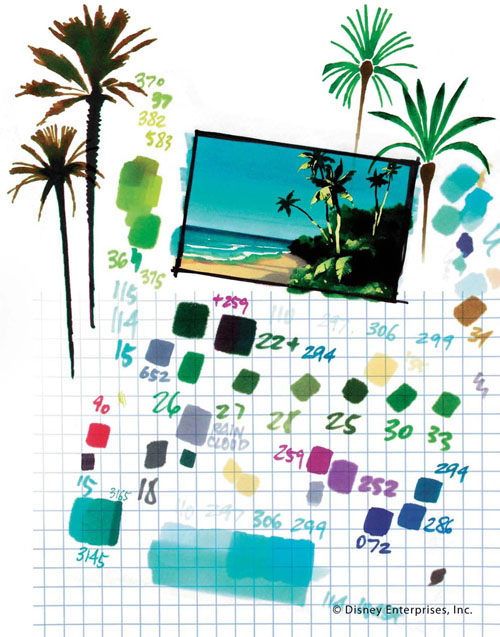VISUAL DEVELOPMENT

© Disney Enterprises, Inc.
Visual Development is the early stage in production where all the different ways to translate a story idea into visuals are being explored.
That includes the search for a style to fit the story, in all areas: background, characters, color, composition and editing. It also includes the research and concept-design based on possible stylistic directions.
Research into areas such as architecture, historical environment, landscape, costume and props starts simultaneously. Concept-design covers all different genres and styles, naturalistic or stylized, drama or romance, time-period movie, children or adult concepts, musical or action film.
The film-language has to be defined: Is it epic like a David Lean film, or character-driven like in an Ingmar Bergman movie, a thriller, possibly even black & white à la Hitchcock or a Chaplin situation comedy?
The visual approach is different in a thriller and in a comedy. Dramatic light and shadows, together with more

© Disney Enterprises, Inc.
night-time scenes will dominate in a thriller or horror movie. A comedy is much lighter and colorful. Camera angles and editing will be very different as well. The more character-driven comedy has more close-ups with a normal camera, whereas an action movie uses more dramatic camera angles, up and down shots and very fast cutting.
Will the style of the film be realistic or abstract stylized, cartoony or surreal? How much detail can we afford to show without overloading the images? Do we lose the audience in an abstract visualization because it might be harder to establish an emotional connection to an abstract character?
The choice of color depends on the style and genre: fresh and friendly daylight colors for a comedy versus a dark mood and sharp contrasts in a thriller.
How big is the budget? Can we afford epic wide shots with tons of characters? On the other hand, do we have enough talent available for character-driven top-quality animation? Can stylized characters show the amount of emotion necessary to understand the story? How realistic can we go in the combination of environmental and character designs without getting trapped in a way too difficult and useless “un-cartoony” animation? All these questions have to be considered and discussed within the small team during that early stage of a new movie.

RESEARCH


The research part can be very time consuming as it depends on how complicated the project is. Sometimes it is very easy to get the right reference within a short time; once in a while it is impossible.
That’s why Disney arranged for research trips for many years for some of the leading designers of a project. They went to Africa for The Lion King; to Peru for the Emperor’s New Groove; to the Greek Islands for Hercules; and to France I for Beauty and the Beast, where I I was fortunate enough to be able to join them. Unfortunately, I was not part of the group of artists that went to China for Mulan.
In that case you would depend on books, television documentaries, movies and the Internet. It is the time when you go back to school and learn how things look and learn how to draw them. During this time, you create the foundation for your style of the movie. The more thorough your research is, the fewer problems you will face during production. During the last stage, there will be no time left for studying.

